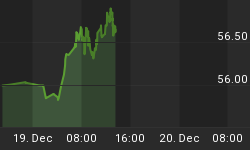Geithner is back at it, and this time it appears the PPIP will manage to launch, mysteriously without PIMCO as noticed by Calculated Risk.
Please consider the Joint Statement on the PPIP Legacy Asset, Securities, and Loan Programs by Secretary of the Treasury Timothy F. Geithner, Chairman of the Board of Governors of the Federal Reserve System Ben S. Bernanke, and Chairman of the Federal Deposit Insurance Corporation Sheila Bair.
Legacy Asset Program
On March 23, 2009, the Treasury Department, the Federal Reserve, and the FDIC announced the detailed designs for the Legacy Loan and Legacy Securities Programs. Since that announcement, we have been working jointly to put in place the operational structure for these programs, including setting guidelines to ensure that the taxpayer is adequately protected, addressing compensation matters, setting program participation limits, and establishing stringent conflict of interest rules and procedures.
Legacy Securities Program
The Legacy Securities program is designed to support market functioning and facilitate price discovery in the asset-backed securities markets, allowing banks and other financial institutions to re-deploy capital and extend new credit to households and businesses.
Under this program, Treasury will invest up to $30 billion of equity and debt in PPIFs established with private sector fund managers and private investors for the purpose of purchasing legacy securities. Thus, Legacy Securities PPIP allows the Treasury to partner with leading investment management firms in a way that increases the flow of private capital into these markets while maintaining equity "upside" for US taxpayers.
Initially, the Legacy Securities PPIP will participate in the market for commercial mortgage-backed securities and non-agency residential mortgage-backed securities. To qualify, for purchase by a Legacy Securities PPIP, these securities must have been issued prior to 2009 and have originally been rated AAA -- or an equivalent rating by two or more nationally recognized statistical rating organizations -- without ratings enhancement and must be secured directly by the actual mortgage loans, leases, or other assets ("Eligible Assets").
Given that nearly everything was initially rated AAA there is essentially no restriction on the garbage PPIP participants can speculate on.
More importantly, it is disingenuous at best to suggest the public is in any way shape or form protected when the public is putting up 93% of the funds while private corporations only have to put up 7%.
Furthermore, when speculators only put up 7%, talk of "facilitating price discovery in the asset-backed securities markets" is ludicrous. This entire process is specifically designed to not only prevent price discovery, but to encourage overpaying of assets, thereby bailing out banks and putting the risk on taxpayers.
Thus, talk of maintaining equity "upside" for US taxpayers is completely ludicrous.
Geithner's Plan Can Succeed
Nonetheless, the bottom line is Geithner's Plan Can Succeed as long as one understands what the real purpose of the plan is, and what constitutes "success".
Please read that link if you have not yet done so, or re-read it if you have. Geithner has stated his plan for raping taxpayers and he is now about to pull it off while publicly preaching "upside" for US taxpayers.
The situation would be even worse had not Shelia Bair insisted that banks not be able to bid on their own assets as per new PPIP Conflict of Interest Rules. See Bair Says No to Furthering PPIP Scam for more details.
I suspect that banks are attempting right now to devise ways around those rules. However, even if the rules are airtight, other aspects of the plan make the PPIP a fraudulent taxpayer ripoff.
Note that most conspiracies are completely laid out in the open for everyone to see, as is exactly the case here.















